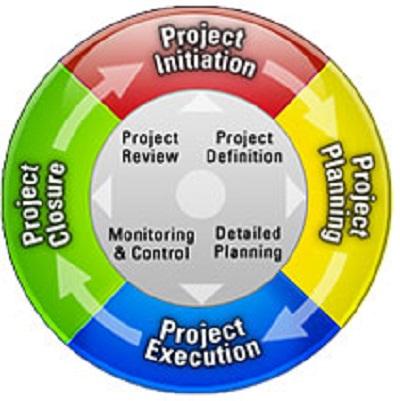Undertaking a project for a company is a temporary endeavor that allows it to create something unique like a product, a set of results or a service. This particular project has a start and a finish date. It is not a routine operation and it’s subject to a set of guidelines with specific goals to fulfill. According to Project Management Institute (PMI) project is the application of knowledge, tools, skills and techniques to project activities to meet the project´s requirements.
Project management (PM) has been practiced informally but began to emerge in the mid-20th century. PMI highlights that PM processes do fall into five groups: initiating, planning, executing, monitoring and controlling and closing.
PM is instrumental to the development of a company, organization, institution, entity, enterprise and others. In a recently conducted nationwide annual web-based survey titled “2015 Project Management Insight“ PMAlliance-in collaboration with Amplitude Research-released comprehensive findings on the state of PM in the United States (U.S) and overall the results were positive.
The detailed study included the participation of a total 150 project managers along with project teams from more than 25 different industries. This analysis was completed in Sept. 2014 to determine correlation between the following: project timelines, costs, best practices of PM and others.
What did the series of questions focus primarily on? The survey questions fixated on project management culture, practices, project scheduling, project execution and project completion, according to the press release. The aim is to determine if there is an organizational philosophy and structure to carrying out these PM guidelines.
Two central factors to consider when you have been assigned this temporary project you must be extremely aware of the end date and the budget allocated towards it. They are core to the project and without careful consideration any along with disorganization will run with problems from start to finish yielding a poor performance.
The data compiled did go on to confirm a favorable correlation between the projects being completed on time and on budget. Exactly 16 percent of participants did indicate that projects are “Always” completed by a fixed date. Meanwhile a separate 47 percent used the word “Often” as an indicator that projects finished by a precise date of completion. In other words, the findings do strongly suggest organizations have success with PM work .
What happened with the remaining percentages? 28 percent did confirm that “Sometimes” projects were carried out by a specific deadline. Just 8 percent and 1 percent concurred with “Rarely” and “Never” to have actually finished this task by a certain date.
How was the distribution of those surveyed in regards to the budgets financed for PM? As previously mentioned the results were encouraging. An 11 percent did assert that projects with a response of “Always” completed within the final and approved budget. Furthermore, 47 percent of teams or managers indicated “Often” as a response. Finally, 34 percent responded with “Sometimes” and “Rarely”.
Evidently there will be room for improvement to move the needle on PM results for the following calendar year. This will ultimately be left up to management to implement the needed changes to improve their performance for these ventures.
Companies or businesses who do not have at their disposal a platform, a proprietary software provider, or the necessary tool to manage all of the resources needed for PM can look to a third party. For example, WorkSection, provides an all-in-one system that handles project and task management, planning and controlling and team organization for many different industries. To date more than 12,000 teams have used this to organize their business projects.
If you are still undecided as to what PM tools provider to seek Opensource.com put a nice top list of PM resources for 2015. It is important to find a tool that is custom tailored and designed to meet your company´s business institutional needs.
The structure of the survey consisted of respondents to first choosing from three options. The questions posted for this web study was what is the official title and level of the position within the organization. Next if they were a part of the project team and if they confirmed with a “Yes” response this qualifies them to complete the entire survey questions.
The respondents worked from a variety of departments like Quality assurance, Testing, Marketing, Software Engineering, Accounting, Technical Data and Purchasing.





